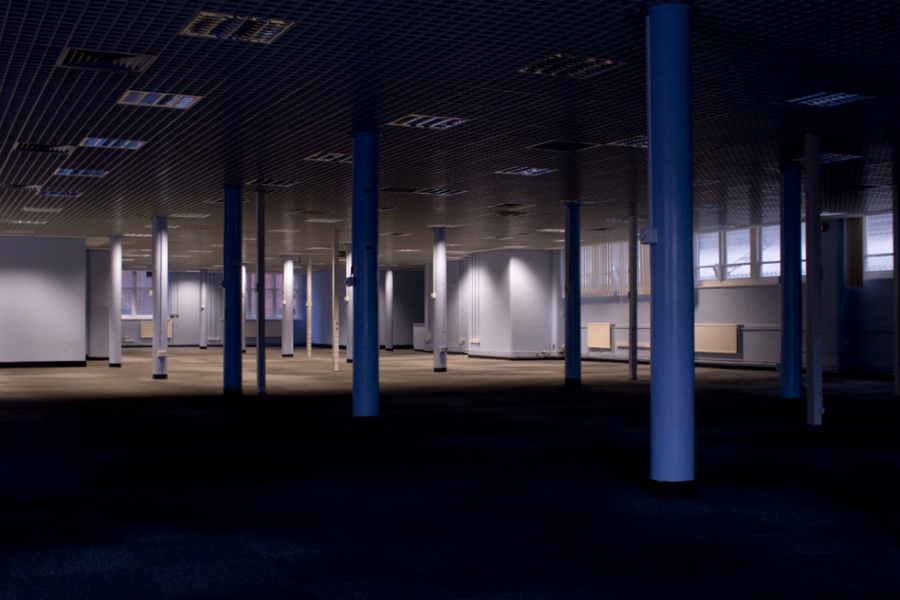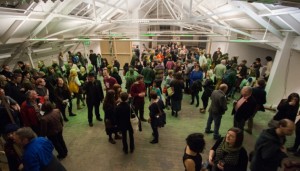New Art Spaces: The Rise of Castlefield Gallery

Emma Sumner finds out more about Castlefield’s impressive expansion, and why it’s more important than ever to provide artists with affordable work space…
Castlefield Gallery has a real knack for developing emerging creative talent in the north-west. Since it was founded 30 years ago, the organisation has continued to play a central role in the promotion of the region as a place where artists can live, make work and successfully gain international recognition.
Part of that development is New Art Spaces, an initiative which seeks out vacant retail and office units and transforms them into short-term work areas for artists, artist collectives and artist development agencies. Gaining locations in Leigh, Salford and Widnes, this month they launched their biggest venue to date, Federation House; an eight-storey (80,000 sq ft) unoccupied Cooperative building in Manchester city centre, close to Victoria train station. Artists have been swift, as with all the New Art Spaces, to take up the slots on offer, creating communities, DIY art schools, pop-up theatres and experimental galleries.
I met with Castlefield Gallery Director Kwong Lee, and Nicholas James, New Art Spaces Coordinator, to find out more about public response, working with brokers, and not stepping on anyone else’s toes…
Can you explain how you developed the project and why you feel there is a need for these spaces?
Kwong Lee: We’ve been developing New Art Spaces since 2006, when we got some space from Urban Splash. As an organisation we are aware that one of the challenges artists have is that there is often not enough space to experiment and test out new work. We always knew there was a demand; even if artists have funding and resources it can still be tricky to get a space, as landlords would rather just sit on their empty buildings than deal with artists. But as an organisation and long standing charity we have a list of things that give us a lot more clout.
How do you identify a space? Is the decision made through what’s available, or do you specifically target an area where you see a need?
Nicholas James: We identify spaces and available properties through our broker, and research to see if there is the demand for New Art Spaces in a particular area and how we might best support that. Where we identify the need for artist work space it is essential that we work to take on spaces that are ideal for artists to work in. We also want to make sure that there is an element of public engagement to the spaces as part of our core aims as a charity, so avoid remote spaces.
Over in Leigh and Widnes, there has been a huge positive public response to the spaces – including artists walking straight in to our exhibition space with paintings under their arm which they want to show – and it is vital that we have that connection, and can remove what can be a perceived barrier between a contemporary gallery space and the public.

So it’s a collaboration between you and your broker to see if there is a demand and a suitable space?
KL: Absolutely. We had wanted a central Manchester space for a while, as we know a lot of artists who want central space and pop up gallery opportunities, but in Leigh or Widnes we really had no idea what the need was until we did further research.
It is almost taking away the financial strain; the project is offering artists the space they need rather than the space they can afford.
KL: We want to take away that element of risk so artists are free to make work. There is already a good studio culture in Manchester and we don’t want to undermine this by providing free or low cost space. In Federation House we will have a number of artist agencies which will open up opportunities for cross-trading, so the set up will be very different to what is happening already.
NJ: These are active short term project spaces rather than studio spaces. We arrange an agreement, for anything up to six months, based on the artist’s proposal in which we ask them to define what they want to do with the space, and what they want to achieve. It’s a unique opportunity for artists to focus their energy on a specific project, and offers the facility to work on a larger scale. When we have had artists’ viewings in Federation House it is fascinating to see each artist thinking about how they would adapt their work to such a large space.
You are already providing assistance here for emerging artists through this and the CG Associates scheme, but is there anything else you would like to do to support artists?
KL: Castlefield Gallery was initially founded in 1984 because it found a lack of platforming and support for emerging artists and their practice. We want to fill this gap intelligently by providing a range of support for artists through a structure that frees up artists time, giving them more opportunity to make work, rather than spending all of their time trying to make money to live. What we are doing is important, but the most important thing is that artists make their work.
Are you looking at that point when many artists hit the glass ceiling, where they need to move away from the region (to somewhere like London or Berlin) for their career to progress?
KL: I think there is a little bit more that we can do for these artists. I think that Federation House is a good example of how we can build on this, as it’s a space that where we can almost import and export artists through international residencies. Artists can develop work in Federation House and we can help by brokering international and national links for residencies and commissions.
Are you also looking to support emerging curators?
KL: Yes, we do what we can as we are only a small organisation. A year ago when we launched CG Associates, we said that it is applicable for artists, independent curators and writers, so we recognise that there is that need and that many people work across a number of these fields. It’s that really interesting mix that we are trying to support, but we don’t actively advertise this, but we do have curators moving into our spaces.
NJ: We are also really keen that each of the New Art Spaces work with each other, and don’t just act as remote satellite spaces; cross-collaboration between all who use these spaces, and encouraging peer-to-peer learning and development, also plays a major part in this.
Emma Sumner
Federation House, Corner of Federation St and Balloon St, Manchester City Centre, is now open to the public; see artists websites for opening times, exhibitions and events. See here for map
See more on New Art Spaces
Main image: Mark Devereux Projects @ Federation House





